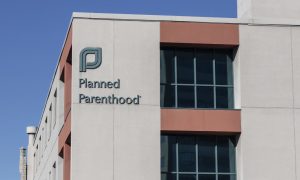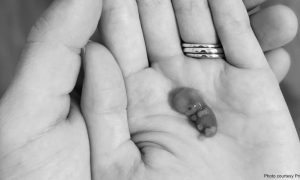Recently-released research from the Ethics & Public Policy Center (EPPC) revealed that the failure rate of mifepristone, the first drug of the abortion pill regimen, is nearly double the failure rate currently listed on the FDA-approved drug label.
The data pool used for the research is the largest known on the abortion pill. Researchers analyzed the data from an all-payer insurance claims database of 865,727 prescribed mifepristone abortions from 2017 to 2023. In addition to asserting that the rate of “serious adverse events” from the drug is approximately 22 times higher than the rate reported on the FDA label, the analysis also states that mifepristone’s failure rate is double what the FDA label claims.
While the FDA label asserts a 2.6-3.8% failure rate for mifepristone abortions, real-world data shows a failure rate of 5.26%, according to the researchers.
“According to the insurance data, 5.26 percent of women undergo a second abortion attempt within 45 days of the first, indicating that the first mifepristone abortion attempt failed,” said researchers, adding (emphasis added):
(We also observe that 1.58 percent of women are prescribed a second dose of misoprostol but not a second dose of mifepristone, a possibility suggested on the drug label for cases in which the woman is no longer pregnant but fetal remains have not been fully expelled from her body. These are not counted as repeated abortion attempts, but repeated use of misoprostol has side effects that pose further harm to women.)
Curiously, although the drug label does not appear to contemplate the possibility of a second abortion attempt using mifepristone for the same pregnancy, we regularly observe this in the insurance claims database.
Out of 865,727 prescribed mifepristone abortions, researchers say 27,896 required a repeated mifepristone abortion attempt, and 24,563 required a surgical abortion procedure after the failed mifepristone abortion attempt. The failure rate of 5.26% equates to about one in 19 women whose abortion will fail, leaving them susceptible to infection that can become life-threatening. Mifepristone has a black box warning for sepsis.
Live Action Research Fellow Carole Novielli noted in 2020 that different abortion industry insiders reported varying failure rates and ranges for the abortion pill. Guttmacher had listed the failure rate at 5%. Three different abortion businesses had listed it at 2%. Another had listed a range from 2-5%, and yet another at 2-4%. Interestingly, abortion pill manufacturer Danco’s website claimed a 2-7% failure rate, noting that “2-7% of women will need a surgical procedure to end the pregnancy or stop heavy bleeding.” Generic manufacturer GenBioPro noted the same range as Danco. At that time, Novielli also noted (emphasis added):
According to a Planned Parenthood document as well as current online information for patients, failure rates for the abortion pill vary by gestational age:
-
- 8 weeks or less- 94% to 98% effective/2 to 6% failure rate.
- 8 to 9 weeks – 94 to 96% effective/4 to 6% failure rate.
- 9 to 10 weeks – 91-93% effective/7 to 9% failure rate.
In 2022, Novielli also reported that Gynuity Health Projects was working on an FDA clinical trial to test later use of the abortion pill, reportedly “build[ing] on [Gynuity’s] published studies evaluating the success of combined mifepristone-misoprostol regimens for abortion through the 11th week of pregnancy.” According to an email from Gynuity:
The first study prospectively assessed the efficacy of a common first trimester outpatient regimen using one dose of mifepristone 200mg and one dose of misoprostol 800mcg. Our findings demonstrated a particularly good chance of abortion success: 92.3% and 86.7% in the 10th and 11th week, respectively. Ongoing pregnancy was 3.6% and 8.7%, respectively. This regimen could be a reasonable option for medication abortion at 11 weeks, but the findings indicated that the significant increase in continuing pregnancies in the later week was cause for concern. [emphasis added].
In other words, it seems some abortion industry insiders — including the manufacturers themselves — have known for several years what the EPPC researchers also just discovered.
The FDA range, oddly, seems to be an outlier among those mentioned above.
“Combined with our prior finding that 10.93 percent of women experience a serious adverse event and adjusting to avoid double-counting, we find that 13.51 percent of women — roughly one in seven — experience at least one serious adverse event or repeated abortion attempt within 45 days of first attempting a mifepristone abortion,” said the researchers.
The EPPC is urging the FDA to reinstate its previous safety protocols that ensured women were evaluated by a doctor prior to taking the abortion pill and that they received follow-up care. It is also calling on the FDA to investigate the failure rate and adverse effects rate of mifepristone and reconsider its approval of the drug.








